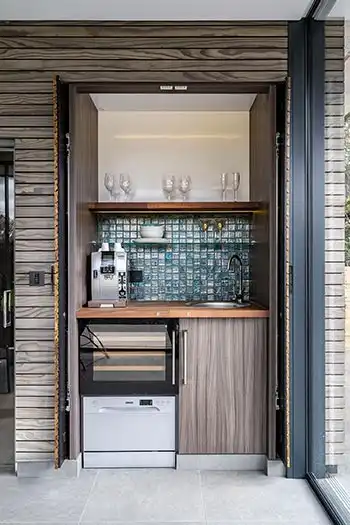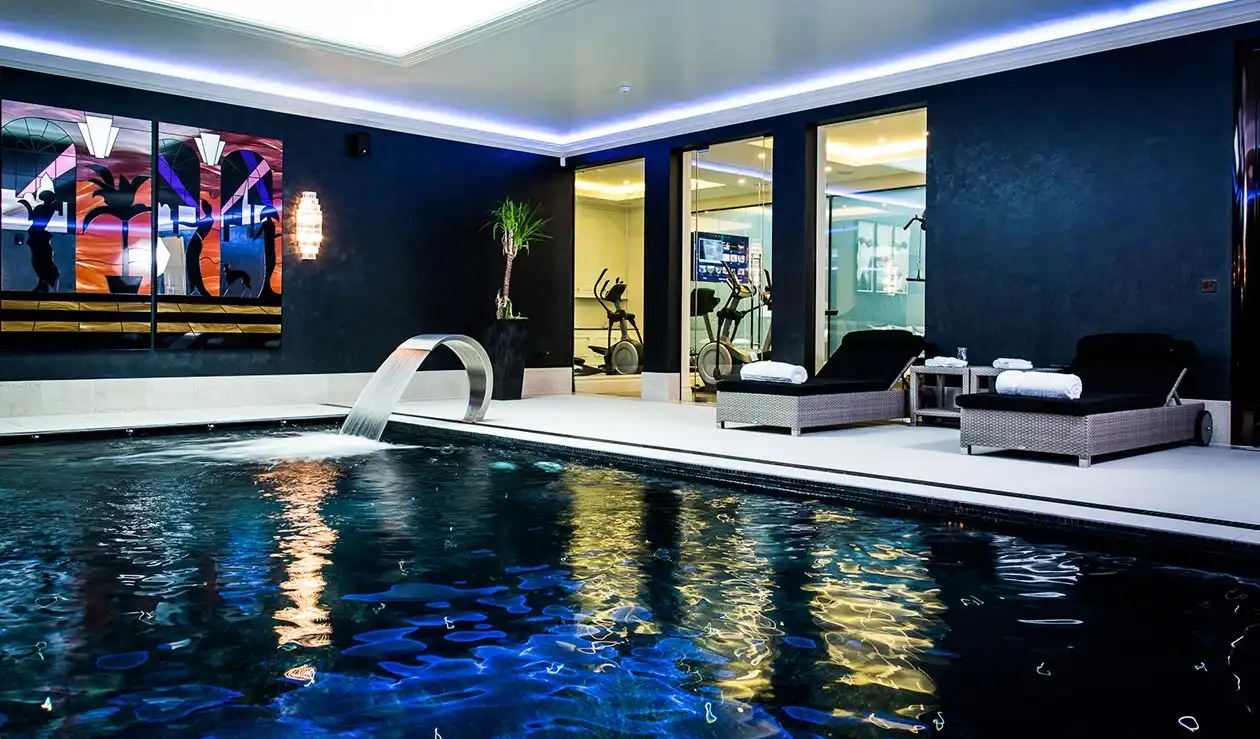
The starting point of your budget
The size of your pool is a fundamental factor affecting cost. Dreaming of a 25m pool? Prepare for a significant investment, and not just to cover the construction. You need to factor in other elements that will increase your costs such as; heating, pool house assembly and maintenance. That being said, with advancements in swimming technology, such as counter-current devices, you can now enjoy an excellent swimming experience even in a smaller pool. It’s worth keeping in mind, that size isn’t everything. In fact, the most popular size for an indoor pool in the UK is between 10m to 12.5m as this size range offers a balance between usability and cost-effectiveness.
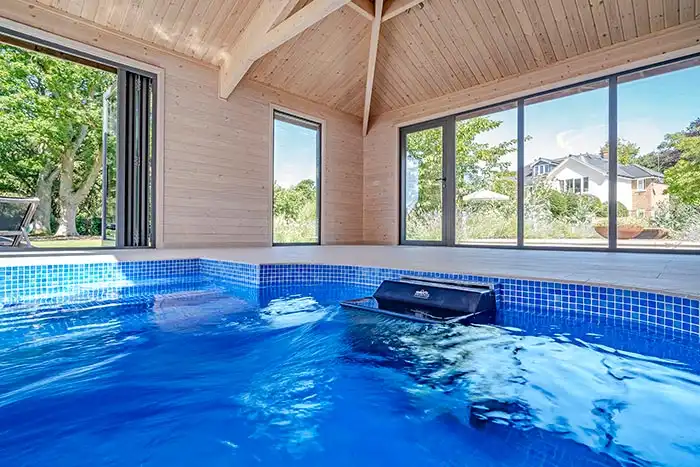
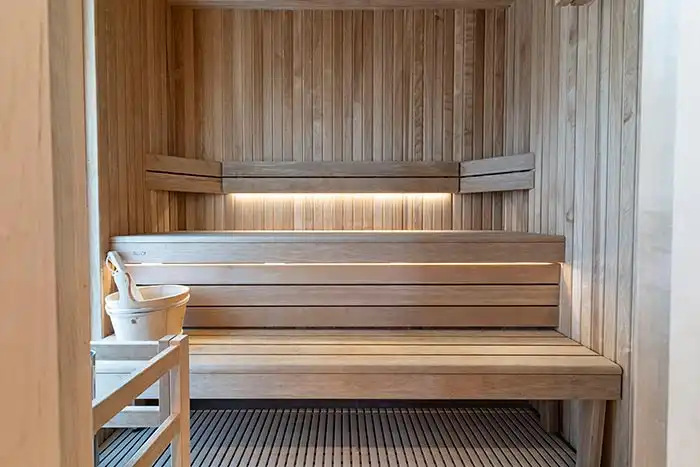
Bespoke add ons
The additions of gyms and bar areas make great use of the space and allow you to take your pool house to the next level, these elements can also transform the space into the newest social hub of your home but keep in mind, it will increase the size of the building and drive costs up. Items such as a corner spa are a fantastic addition to your swimming pool, whether used for relaxing after a hard day's work or after an invigorating swim, it adds an extra dimension to the pool complex. Saunas and steam rooms have a multitude of health benefits and will add to the relaxing atmosphere of your pool house. However, remember that this typically leads to a larger building, so more excavation, concrete, building, roof, walls, floor – more everything!
The role of pool covers in cost and functionality
Pool covers are more than just a functional accessory; they're a critical part of your pool's design, impacting both cost and efficiency. Covers help retain heat, reduce running costs and provide varying levels of safety. Let's compare the costs and features of different types of covers for a standard 8m x 4m indoor pool:
- Manual Solar Bubble Cover (£1,000 -£1,430): Offers good heat retention and is manually operated, but provides poor safety.
- Semi-Automatic Foam Cover (£3,500-£6,000): Ensures excellent heat retention and is easy to use, with average safety.
- Automatic Slatted Surface Mount Cover (£8,000-£10,500): Provides good safety, excellent heat retention and is very easy to use.
- Hidden Automatic Slatted Cover (£18,500-£21,000): Offers good safety, excellent heat retention, and superior aesthetics, with extremely easy use.
- Automatic Safety Cover (£20,500-£23,000): A high level of safety, good heat retention and very easy to use.
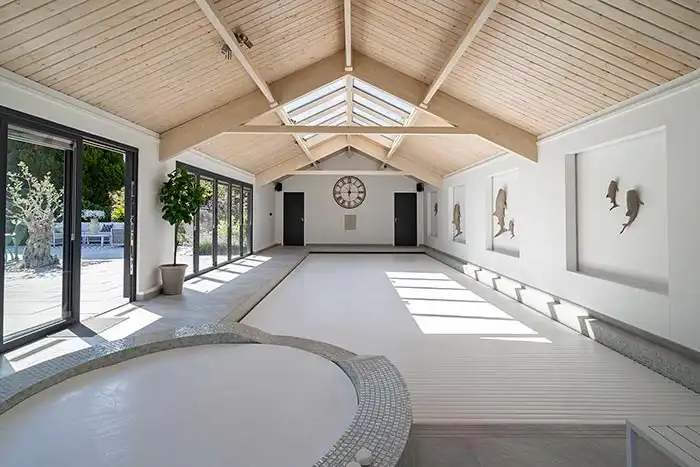
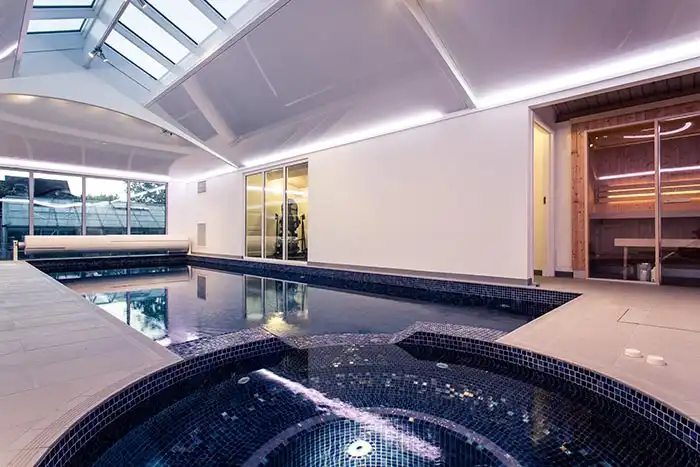
Balancing aesthetics, safety and budget
